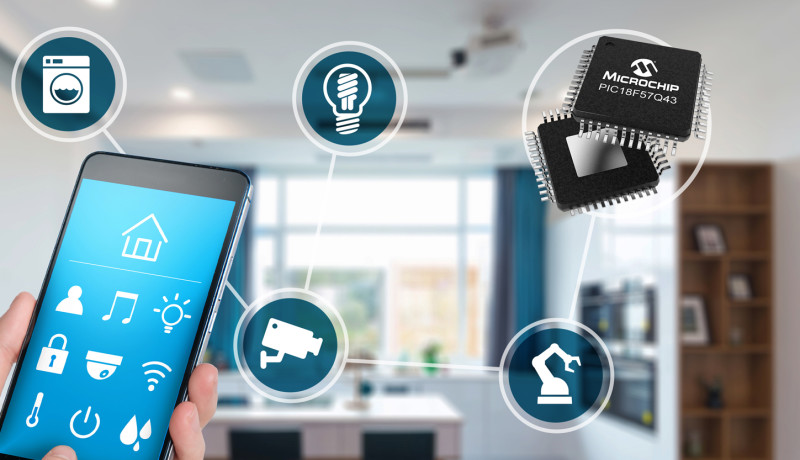New PIC® MCU Family Moves Software Tasks to Hardware for Faster System Response

This is a submission from Microchip on the next generation PIC18-Q43 family which helps developers bring higher performing solutions to market faster. The family’s combination of peripherals offers users greater versatility and simplicity when creating custom hardware-based functions with easy to use development tools.
In microcontroller (MCU) based system design, software is often the bottleneck for both time to market and system performance. By offloading many software tasks to hardware, Microchip Technology Inc.’s (Nasdaq: MCHP) next generation
PIC18-Q43 family helps developers bring higher performing solutions to market faster.
The family’s combination of peripherals offers users greater versatility and simplicity when creating custom hardware-based functions with easy to use development tools. Configurable peripherals are smartly interconnected to allow near zero latency sharing of data, logic inputs or analog signals without additional code for improved system response. Ideal for a variety of real-time control and connected applications, including home appliances, security systems, motor and industrial control, lighting and Internet of Things (IoT), the PIC18-Q43 family helps reduce board space, Bill of Materials (BoM), overall costs and time to market.
Core Independent Peripherals (CIPs) are peripherals that have been designed with additional capabilities to handle a variety of tasks without the need for intervention from the Central Processing Unit (CPU). With CIPs like timers, simplified Pulse Width Modulation (PWM) output, CLCs, Analog to Digital Converter with Computation (ADCC), multiple serial communications and more, the product family is designed to make it easy for developers to customize their specific design configuration. The CLC provides programmable logic that operates outside the speed limitations of software execution, providing customers with the ability to tailor such things as waveform generation, timing measurements and more. CLCs can be the "glue" logic to connect on-chip peripherals for hardware customization with unprecedented ease. Its core-independent communication interfaces, including UART, SPI and I2C, offer flexible, easy-to-use building blocks for developers looking to create a customized device, while the addition of multiple DMA channels and interrupt management accelerate real-time control with simplified software loops.
With Microchip’s comprehensive development tool suite, users can quickly and easily generate application code and customize combinations of CIPs in a graphical user interface (GUI) environment. Additionally, the family operates up to 5V which increases noise immunity and enables customers to interface to a wide range of sensors.
PIC18-Q43 family helps developers bring higher performing solutions to market faster.
The family’s combination of peripherals offers users greater versatility and simplicity when creating custom hardware-based functions with easy to use development tools. Configurable peripherals are smartly interconnected to allow near zero latency sharing of data, logic inputs or analog signals without additional code for improved system response. Ideal for a variety of real-time control and connected applications, including home appliances, security systems, motor and industrial control, lighting and Internet of Things (IoT), the PIC18-Q43 family helps reduce board space, Bill of Materials (BoM), overall costs and time to market.
Core Independent Peripherals (CIPs) are peripherals that have been designed with additional capabilities to handle a variety of tasks without the need for intervention from the Central Processing Unit (CPU). With CIPs like timers, simplified Pulse Width Modulation (PWM) output, CLCs, Analog to Digital Converter with Computation (ADCC), multiple serial communications and more, the product family is designed to make it easy for developers to customize their specific design configuration. The CLC provides programmable logic that operates outside the speed limitations of software execution, providing customers with the ability to tailor such things as waveform generation, timing measurements and more. CLCs can be the "glue" logic to connect on-chip peripherals for hardware customization with unprecedented ease. Its core-independent communication interfaces, including UART, SPI and I2C, offer flexible, easy-to-use building blocks for developers looking to create a customized device, while the addition of multiple DMA channels and interrupt management accelerate real-time control with simplified software loops.
With Microchip’s comprehensive development tool suite, users can quickly and easily generate application code and customize combinations of CIPs in a graphical user interface (GUI) environment. Additionally, the family operates up to 5V which increases noise immunity and enables customers to interface to a wide range of sensors.
